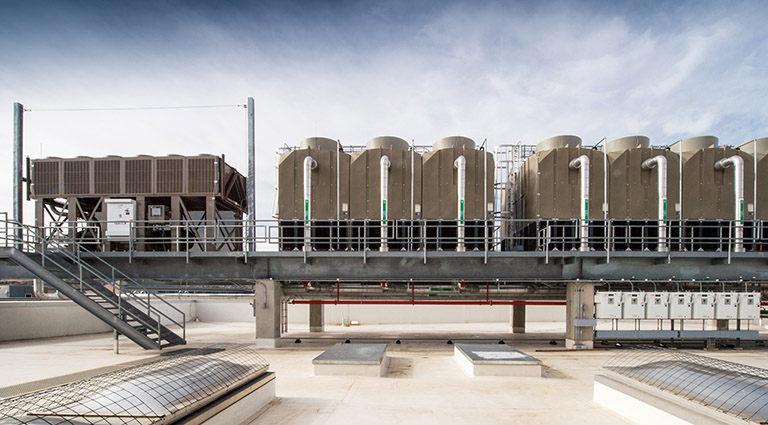High-Performance Computing Data Center Water Usage Efficiency
NLR partnered with Johnson Controls and Sandia National Laboratories to reduce onsite water usage required by the evaporative cooling towers in NLR's High-Performance Computing Data Center (HPC Data Center).

The initial design of the data center used evaporative coolers to eliminate the added expense of energy-demanding chillers. However, while the cooling towers were more efficient and less expensive, they would consume approximately 2 million gallons of water annually to support cooling of the IT load—approaching an hourly average of 1 megawatt.
By teaming up with Johnson Controls and Sandia National Laboratories, NLR researchers evaluated a new approach to reduce onsite water consumption that is expected to cut annual water use for cooling by more than half without negative impacts to efficiency.
In August 2016, a prototype thermosyphon cooler—an advanced dry cooler that uses refrigerant in a passive cycle to dissipate heat—was installed at NLR. The thermosyphon was placed upstream of the HPC Data Center cooling towers at the ESIF to create a hybrid cooling system. The system coordinates the operation for optimum water and operating cost efficiency—using wet cooling when it's hot and dry cooling when it's not.
NLR engineers David Sickinger and Kevin Regimbal received 2018 U.S. Department of Energy Federal Energy and Water Management Awards for this outstanding achievement in energy and water efficiency and conservation.
Learn more by downloading a fact sheet about the project and read the final technical report, Thermosyphon Cooler Hybrid System for Water Savings in an Energy-Efficient HPC Data Center: Results from 24 Months and Impact on Water Usage Effectiveness.
Share
Last Updated Dec. 4, 2025
